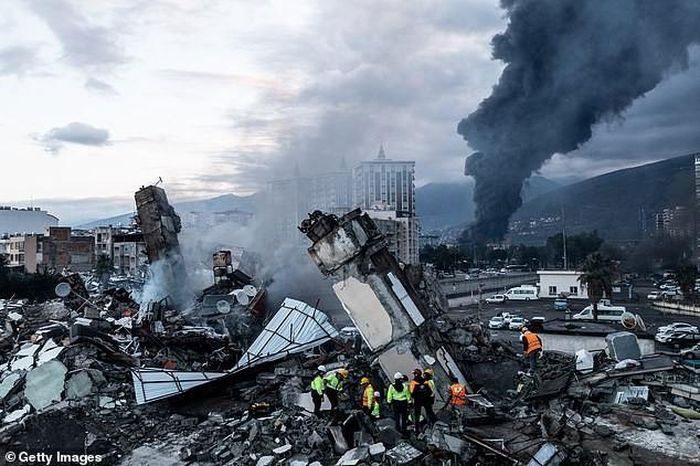Researchers have reported that the strong earthquake in Turkey caused a shift of tectonic plates southwest by 3 meters.
In an interview with Corriere della Sera on February 7, Carlo Doloni, the President of the National Institute of Geophysics and Volcanology in Italy (INGV), stated that the Arabian Plate shifted approximately 3 meters relative to the Anatolian Plate.

Devastation following the earthquake in Turkey on February 6.
Doloni emphasized that the fault line (where tectonic plates press against each other) is at least 150 kilometers long. In fact, the tremors felt in Turkey were related to Syria. “Everything happened in a matter of seconds,” he remarked.
The scientist added that it is impossible to predict when the aftershocks will cease. According to him, this phenomenon will continue until the stored energy is released.
Seismologists recorded a powerful earthquake measuring 7.8 on the Richter scale on February 6. It occurred near the Turkish city of Gaziantep, close to the Syrian border, followed by dozens of aftershocks. Later that afternoon, another earthquake of magnitude 7.6 struck.
According to Orhan Tatar, head of the Disaster and Emergency Management Authority (AFAD) in Turkey regarding earthquake risk reduction, at least 285 aftershocks have been recorded in the country since the initial earthquake, with most occurring in central Turkey.
The country’s emergency services are on high alert. Over 12,000 search and rescue personnel are working in the affected areas, along with 9,000 soldiers. More than 70 countries have offered rescue teams and other assistance.
As per the latest data, the death toll from the earthquake has exceeded 7,800, with tens of thousands injured. Turkish President Recep Tayyip Erdogan declared a national mourning period, lasting until the end of February 12.


















































